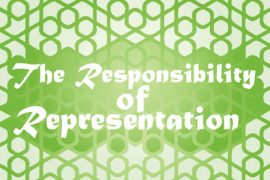Is Hijabophobia as scary as it seems? Why does America fear Muslims? Exploring misconceptions and challenging Muslim stereotypes.

How many times have you witnessed the stereotyping of Muslim women in daily interactions? Have you seen movies that portray Muslims as oppressed? If you are a Muslim female, have you received any questions that might surprise you? When traveling, I have been asked questions such as “Are you allowed to drive?” and “Are you forced into marriage?” I believe this stems from the linked ideas of many in the West who believe stereotypes, and due to the rise of Hijabophobia, the fear of veiled women, a gender-specific form of Islamophobia. The latter became widespread after the 9/11 terror attacks.
In the year 2017 alone, there were over 200 reported anti-Muslim incidents. Based on an annual poll by the Institute for Social Policy and Understanding, Muslims reported experiencing the highest amount of discrimination at 61% in the past year. Furthermore, the same research looked at female discrimination, and respondents reported experiencing a 69% religious discrimination[1]. This bias against Muslims is widespread throughout much of the West, but for the sake of this article, I will only be discussing the US: how Islamophobia and Hijabophobia came about, and how it has been challenged.
Following the 9/11 attacks in New York City, there had been a huge change in the reporting of Islam. There had already been a gradual shift from Orientalism to neo-Orientalism at the turn of the 21st century, but the terror attacks marked the most prominent transformation. Orientalism put simply is the stereotyping of people from Asia and the Middle East, of which a part is women being portrayed as exotic belly dancers or veiled and silent. Neo-Orientalism, or Islamophobia, is then the shift from fascination and interest of the presumed less-developed Orientals, to the fear of them instead.
As an example of an Orientalist attitude, in November of 2001, Laura Bush’s radio address to Americans set forward a stereotype about Afghani women – they were oppressed and in need of help; with the war waged on Al Qaeda in Afghanistan, the US would rescue veiled women under Taliban control. “Taliban and its terrorist allies were making the lives of children and women in Afghanistan miserable… I hope Americans will join our family in working to ensure that dignity and opportunity will be secured for all the women and children of Afghanistan,[2]” she said.
In an Islamophobic view, all Muslims became associated with terrorists. How did Muslim women become associated with terror? Their covering(hijab) is a clear and instant indication of their Muslim identity. The Muslim woman became guilty by association. This led many Americans to fear hijab-wearing females. FBI hate crime statistics show anti-Muslim assaults had reached a whopping 481 in 2001, compared to only 28 assaults in 2000[3], clearly a result of a post 9/11 world. Furthermore, terrorist movements such as ISIS have only contributed to the deterioration of the Muslim image in America.
Every female Muslim who wears her hijab is challenging this stereotype. It is a way of proving that despite the negative connotations associated with hijab and Muslim females, their role in their society and workplace has not changed. But rather, it has made their identity more visible and stronger. In the latest US elections of 2018, for the first time, two female Muslims were elected seats in Congress: Rashida Tlaib and Ilhan Omar. Ibtihaj Muhammad was the first Muslim American women to wear the hijab in the 2016 Summer Olympics. These are a few of the many Muslim women that are challenging the misconceptions about the hijab and its supposed submissive wearers.
How can we, as Muslims females, challenge these stereotypes? One of the most important actors in a post-revolution technological age is social media. This is important in how Muslim women are portrayed, because now they can write their own narrative; showcase a real representation of Muslim women.
References
[1] Statistics from Institute for Social Policy & Understanding, American Muslim Poll 2018
[2] Radio address by Mrs. Laura Bush taken from White House archives.
[3] Statistics taken from Federal Bureau of Investigation Uniform Crime Reporting Program
Federal Bureau of Investigation . (2000-2001). Hate Crime Statistics. Retrieved from Federal Bureau of Investigation Uniform Crime Reporting: https://ucr.fbi.gov/hate-crime
Institute for Social Policy and Understanding. (2018). American Muslim Poll 2018 Pride and Prejudice.
Office of the First Lady . (2001, November 17). Radio Address by Mrs. Bush . Retrieved from George Bush White House Archives: https://georgewbush-whitehouse.archives.gov/
news/releases/2001/11/20011117.html



